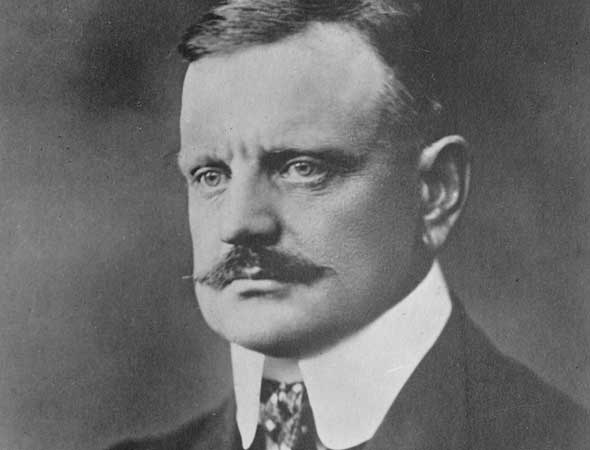SIBELIUS: Symphony No. 1
by Jeff Counts
THE COMPOSER – JEAN SIBELIUS (1865-1957) – Since long before Sibelius’ birth, Finland was a Grand Duchy of the Russian Empire. By the end of the century, Finn’s were regularly whispering amongst themselves about autonomy and the Imperial Governor felt compelled to issue a manifesto that proposed a strengthened alliance with Russia. It had the opposite effect, and half a million citizens signed a petition against it. Sibelius, composer of Kullervo, a large-scale symphonic cantata from 1892 based on the Finnish national epic Kalevala, was expected to once again say something patriotic through his music. He obliged with Finlandia, a work he considered “relatively insignificant” but one that made permanent his status as a hero among his people.

THE HISTORY – It was on open question. When the great symphonists of the late 19th century – Brahms, Bruckner, Mahler – finally set down the baton passed to them by Beethoven, who was poised to pick it up and carry it further into the 20th? The answer would not come from France. Ravel, like Debussy, was interested in other things. The same could be said for Bartok, Stravinsky, Richard Strauss. But there were others, many of them. Composers like, Nielsen, Shostakovich, Vaughan Williams, Prokofiev and, of course, Jean Sibelius were fully committed to the tradition and would go one to produce historically important cycles of their own. They all had to start with No. 1 though and, for Sibelius, that process began in 1898, between the successes of Kullervo and Finlandia. With his commitment to the nationalist cause firmly in place after 1892 (and soon to be resoundingly reiterated with Finlandia), Sibelius’ first pure symphony was eagerly anticipated by his countrymen. If they were expecting another overtly Finnish statement, full of references to local history and tradition, they didn’t get it. Sibelius’ Symphony No. 1 was fresh and personal, of course, but it was also fairly traditional in design. It bears noting that “traditional”, in this context of time and place, meant “Russian” more than anything else. This must have been baffling to the more astute Helsinki concertgoers, but they adored him enough to enjoy the music on its substantial non-political merits. As for that “Russian-ness”, the influence of Tchaikovsky is readily apparent, particularly in the middle movements, though the hallmarks of the distinct “Sibelius sound” we now associate with the 2nd Symphony and the Violin Concerto are thankfully present as well. For reasons we cannot really know since the score has not survived, Sibelius was unhappy with the original version and revised the symphony in 1900. Fitting. It now lives forever in the century for which it was meant.
THE WORLD – Elsewhere in 1900, the first Zeppelin flight occurred in Friedrichshafen, Germany, the first line of the Paris Metro opened, Puerto Rico became a U.S. territory and Italy’s King Umberto I was assassinated.
THE CONNECTION – Sibelius 1 was last performed by the Utah Symphony in September 2021. Jahja Ling was on the podium.












